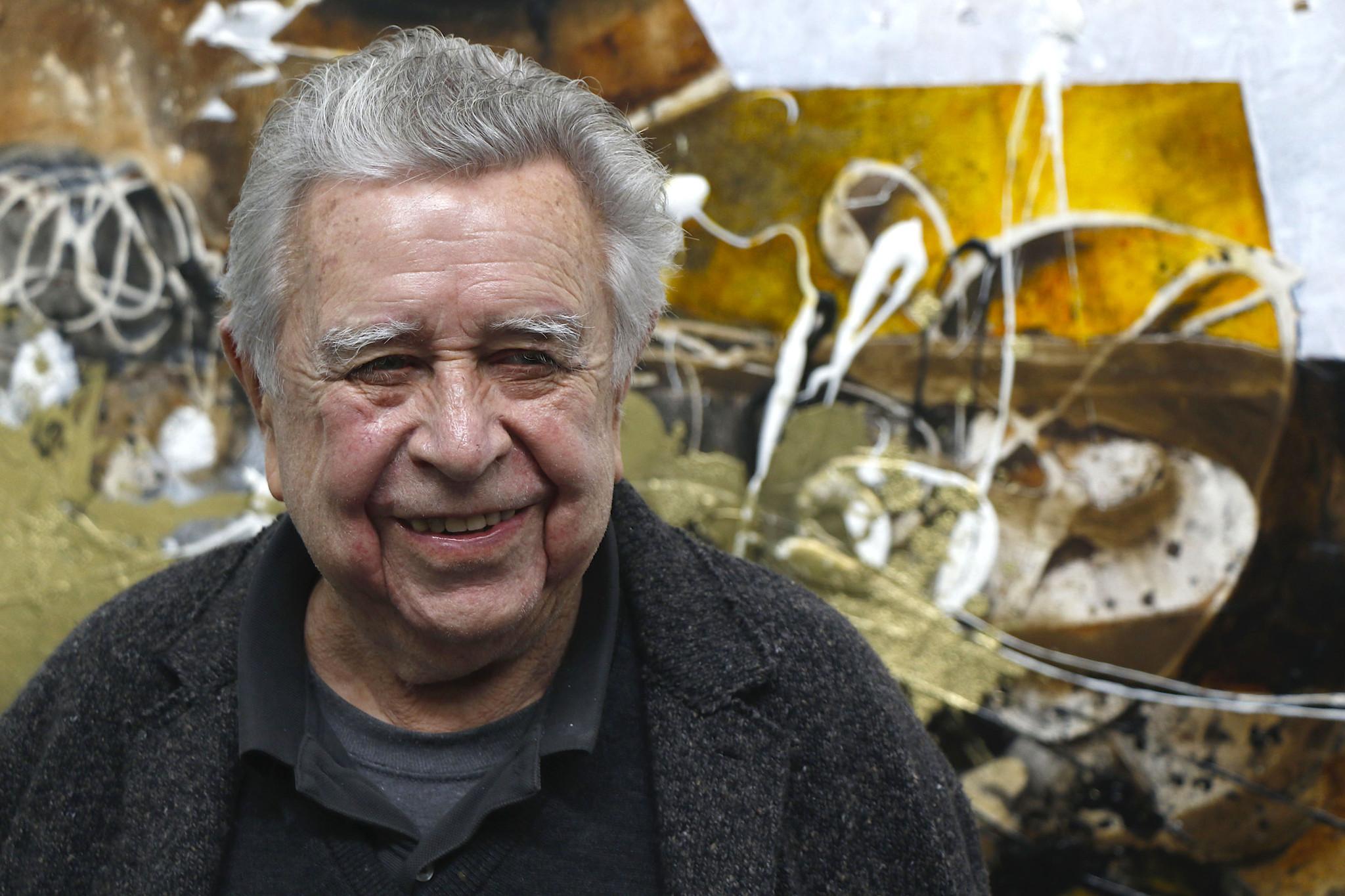Manuel Felguérez: Mexican abstract artist who searched for beauty and harmony
Known best for paintings and metal sculptures that featured geometric shapes, he was part of a movement that broke from traditional muralists

Your support helps us to tell the story
From reproductive rights to climate change to Big Tech, The Independent is on the ground when the story is developing. Whether it's investigating the financials of Elon Musk's pro-Trump PAC or producing our latest documentary, 'The A Word', which shines a light on the American women fighting for reproductive rights, we know how important it is to parse out the facts from the messaging.
At such a critical moment in US history, we need reporters on the ground. Your donation allows us to keep sending journalists to speak to both sides of the story.
The Independent is trusted by Americans across the entire political spectrum. And unlike many other quality news outlets, we choose not to lock Americans out of our reporting and analysis with paywalls. We believe quality journalism should be available to everyone, paid for by those who can afford it.
Your support makes all the difference.Before he became one of the most important artists in Mexico, Manuel Felguerez built an eclectic resume. He provided live bats to a lucha libre wrestler as props during bouts. He sold ancient Mexican artefacts to pay his way to Europe. He amassed a menagerie that included a tiger, a fox, lizards, a hawk and a black widow spider, and learnt taxidermy so he could preserve the animals when they died.
“That was, without my knowing, my first lesson in sculpture,” Felguerez said in a 2003 interview with the newspaper Reforma.
Felguerez died of coronavirus on 7 June at his home in Mexico City, Plinio Avila, an artist and family friend, said. He was 91.
Felguerez decided to become an artist during his first trip to Europe, after drawing a scene on the river Thames from a boat, he told Reforma. Known best for paintings and metal sculptures that featured geometric shapes, Felguerez became part of a movement that broke from traditional Mexican muralists like Diego Rivera.
He trained in France and produced abstract work that, unlike that of Rivera and his cohort, did not emphasise the Mexican revolution or the plight of the masses. As a visiting researcher at Harvard University in the 1970s, Felguerez began using computer programming to create art.
Manuel Felguerez was born on 12 December 1928, in Valparaiso, Zacatecas, as Mexico was emerging from more than a decade of revolution and civil unrest. He told the magazine Mexico Desconocido that one of his earliest memories was of a battle between fighters defending the hacienda owned by his father and workers who eventually overpowered them and claimed the land as their own.
When he was seven, he moved to Mexico City with his family so his father could petition the federal government to be compensated for the lost property. A year later his father fell ill and died.
Felguerez studied in Paris at the Academie de la Grande Chaumiere, an art school, and with the Russian-born sculptor Ossip Zadkine, and began to focus more exclusively on making art. He was later a professor at the Ibero-American University and the National Autonomous University of Mexico, both in Mexico City.
His marriage to Ruth Rohde ended in divorce. His second wife, the artist Lilia Carrillo, died in 1974. He is survived by his two children with Rohde, Karina and Patricia Felguerez Rohde, and his third wife, Mercedes Oteyza de Felguerez.
“His work was only about enjoying the search for beauty and harmony,” Avila said. “He obviously wasn’t aiming to create paintings that were shocking or vibrant, but rather something pleasurable.”
Alfonso Vazquez, the director of the Zacatecan Institute of Culture, remembered touring an exhibition that included Felguerez’s work with the artist several years ago. When someone asked how to interpret one of Felguerez’s hulking metal sculptures, Vazquez recalled him pausing to consider the piece before addressing the group.
“For me, it signifies two years of work,” he said.
“He was trying to say that we shouldn’t look for meaning behind art,” Vazquez said. “The work moves you or it provokes you – but it speaks to you.”
Manuel Felguerez, abstract artist, born 12 December 1928, died 7 June 2020
© The New York Times
Join our commenting forum
Join thought-provoking conversations, follow other Independent readers and see their replies
Comments